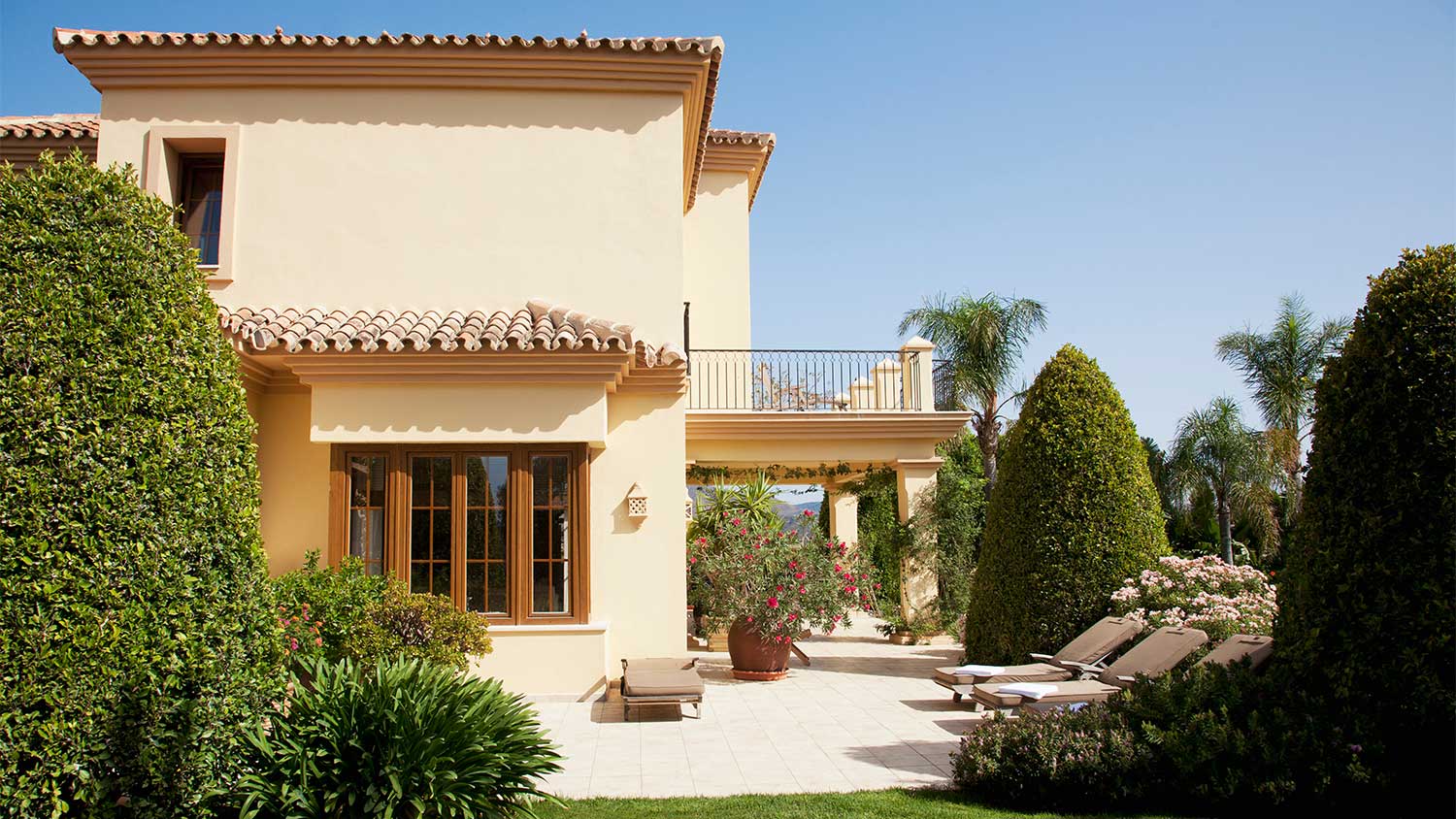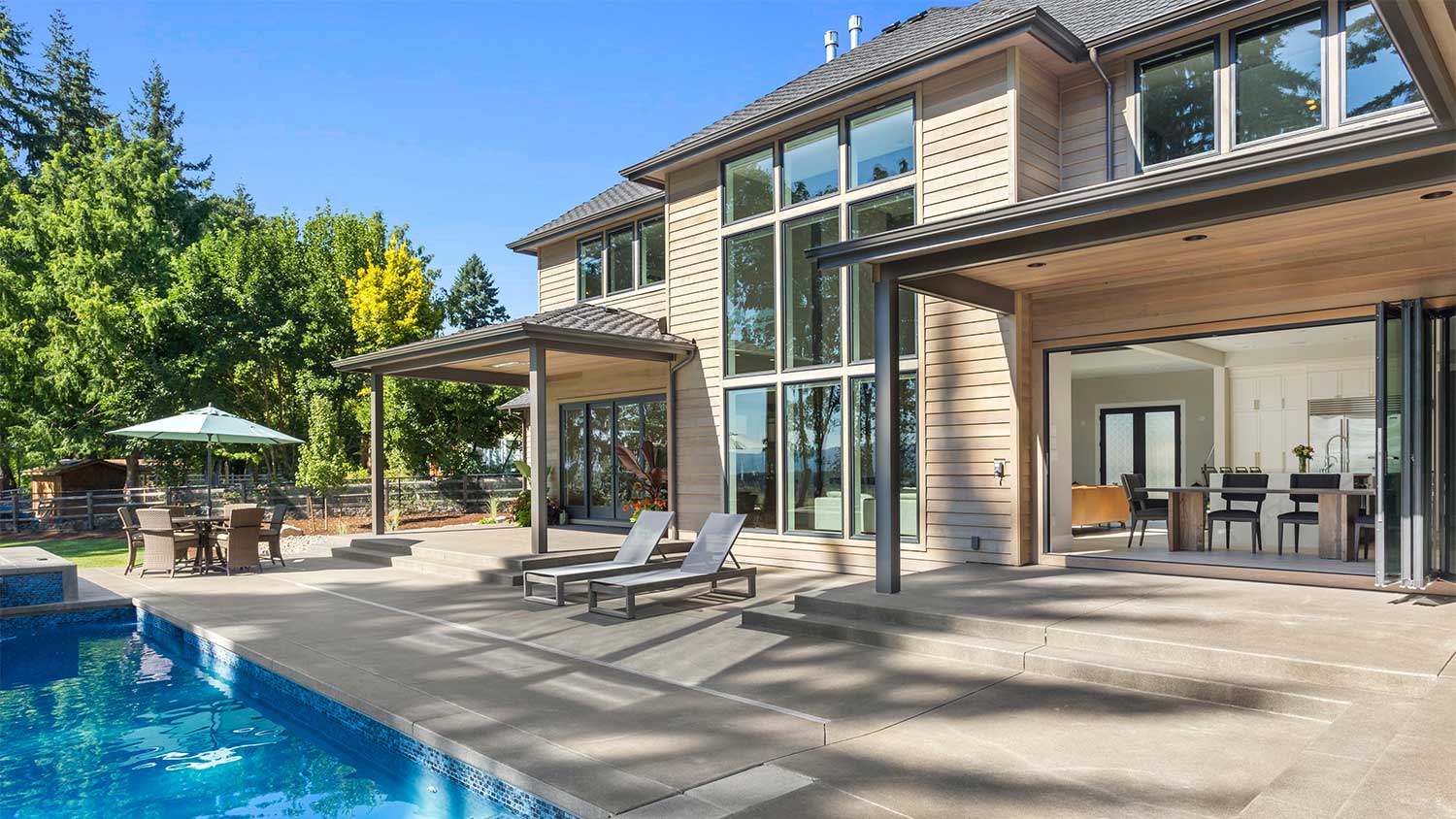
The cost to install shiplap siding or wall surfaces in your home depends on several factors, including the material type and the size of your project.
Choosing siding is about more than just curb appeal


Stucco siding can cost double what some wood species cost, but it lasts close to twice as long.
Stucco siding is more resistant to water and is far more resistant to fire.
Wood siding gives you more customizability and a more traditional appearance.
Stucco is more insulating, making it a better option in hot, sunny climates.
Wood siding requires more maintenance than stucco, especially in humid, rainy areas.
Home siding takes a beating from wind, precipitation, and other outdoor elements, so deciding between stucco and wood siding can be a tough decision. Stucco offers more insulation and is better in hotter climates, while wood siding performs well in dry areas and creates a more natural, traditional look, sometimes at a lower installation cost. Both can look great on any home, but consider the norm in your neighborhood to maximize your return on value.
Stucco is a more durable finish, lasting for up to 50 years with good maintenance. It’s the superior type of siding if you live in an area prone to wildfires, and it’s slightly more resistant to water and moisture. Wood siding can be half the cost, depending on the species and style, and it gives you more options to customize your home’s appearance. Wood requires more maintenance, but can be easier to repair.

Stucco siding is a masonry product made from cement, sand, lime, and water. Professionals who do stucco apply it in multiple coats adhered directly to your home, so it’s less prone to damage from intense wind. It lasts for 50 years, on average, with good maintenance, but repairs can be challenging and expensive if it cracks or chips from impact or settling.
| Pros | Cons |
|---|---|
| Longer lifespan | Harder to repair |
| Less maintenance | Less customization |
| Better insulation | Hard to DIY |
Best for: Maximizing efficiency in homes in warmer climates
Stucco can last longer than 50 years, which is close to double the lifespan you’d get from wood siding. Maintenance and repairs are more challenging, but the material needs less maintenance overall, especially in areas where moisture is present.
Stucco siding costs close to what you’d pay for wood siding, but it can be double the price of some more affordable wood species.
Stucco is one of the most fire-resistant siding materials, and it offers superior insulation, making it the better option in hot climates, especially if wildfires are a concern.
Stucco’s rigidity can cause it to crack with frequent changes in weather or with foundation movement, so it’s not ideal in areas with expansive clay soil that shifts under and around your home. Repairing stucco is more challenging and expensive than repairing wood siding, so if you do need maintenance, you’ll pay more if you have stucco siding.
Stucco is more challenging to install for DIYers, as it involves a high level of skill, especially if you want a smooth texture. It’s always best to leave siding to an expert, but especially for stucco, you should hire a local stucco contractor for the best results.
Finally, you can paint stucco, and you have some options for texture, but overall, you have less room to customize than you do with wood siding. You can’t stain stucco or install different styles, so you’re more or less locked into a specific look.

Wood siding, of course, is made from natural wood. Cedar and pine tend to be the most popular types of wood siding because of their durability, but you have other species for customization. You can choose different styles, too, like wood shakes, planks, and even board and batten. Unlike stucco, wood siding doesn’t adhere directly to your structure, making installation more like vinyl siding or fiber cement siding.
| Pros | Cons |
|---|---|
| Traditional aesthetic | Vulnerable to pests |
| Wide variety | More maintenance |
| Sustainable | Prone to fire |
Best for: Homeowners who live in dry areas with no risk of wildfires, and for those who want a rustic or natural look
Many siding materials attempt to mimic the texture and appearance that wood siding supplies naturally, which is proof that people love the traditional look of wood siding. If your home needs a boost in curb appeal, the warm, timeless look of wood siding might just be the move.
You have far more design options with wood siding, too, so you can really customize your home’s look. Wood is easy to stain and paint, and you can choose from different styles, including clapboards, shingles, shakes, board-and-batten siding, and more.
Because wood is a renewable resource, incorporating it as home siding is considered an eco-friendly move. You can work with a local siding contractor to utilize even more eco-friendly resources, such as reclaimed wood.
One of the biggest cons of wood siding is that it’s more susceptible to damage. It can warp and crack in response to changes in moisture, harbor mold in humid or rainy areas, and even attract wood-destroying insects, including termites. You can add a fireproofing spray to wood siding, but it’s still more likely to catch and spread fire than stucco.
Wood siding requires more maintenance than stucco to keep it protected and looking good. Knowing the warning signs of siding issues and having a siding repair pro on call is a good move if you go with wood siding.
High-end wood species can also be more expensive than stucco, and opting for board and batten style siding can also drive your costs higher than stucco.
When it comes to deciding between stucco and wood, you’ll need to consider a few key things to determine what’s best and when it comes down to personal preference.
Stucco and wood have very different looks, so this decision comes down to your personal preference. That said, wood siding will give you many more design options. You can customize with paint, stain, wood species, and a variety of siding styles.
Stucco lasts twice as long as wood siding in most climates, and it holds up better to severe wind. It’s also more resistant to changes from moisture, especially if you waterproof your stucco, and it’s one of the most fire-resistant siding options, making it a better choice in areas where wildfires are a possibility.
Wood siding costs an average of $6.50 per square foot, while stucco costs an average of $8 per square foot. Aside from wood being more affordable, on average, more common wood species like pine can bring your per-square-foot pricing down to just $3, meaning your total could be far lower if you go with wood.
Stucco and wood siding are both good siding options in dry climates, as both absorb moisture and can lead to issues with mold growth and siding damage if your home sees a lot of rain. If you live in a humid or rainy area, fiber cement or vinyl siding are better choices.
Stucco siding requires less maintenance to keep it looking clean and to maintain good curb appeal. It’s less prone to cracking, warping, and pest damage. Even with higher siding repair costs per square foot, you’ll spend less on maintaining stucco due to the lower frequency of maintenance.
Both wood siding and stucco increase home value and provide an average 70% ROI. The specific value you’ll see depends on where you live, but they both boost curb appeal and can keep your home protected from the elements.
From average costs to expert advice, get all the answers you need to get your job done.

The cost to install shiplap siding or wall surfaces in your home depends on several factors, including the material type and the size of your project.

The cost of Hardie board siding depends on the size of your home and the style and color you choose. Get a more accurate estimate with our in-depth cost guide.

Mobile home skirting replacement costs come down to the material you choose and the size of your home. Use this guide to budget for your skirting project.

Wood clapboard siding grows dingy over time, but these DIY cleaning steps will have your exterior walls looking beautiful again.

Choosing the right siding can boost your curb appeal and protect your home. Our guide explores 12 siding options to help you decide.

Discover the pros, cons, and everything else you need to know about insulated vinyl siding.